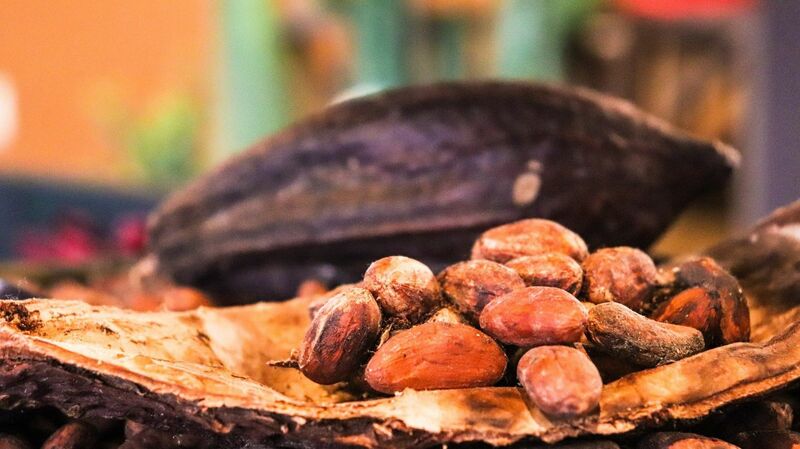
Dec ICE NY cocoa (CCZ23) on Thursday closed -1 (-0.03%), and Sep ICE London cocoa #7 (CAU23) closed +31 (+1.06%).
NY cocoa prices Thursday posted a new record high but then fell back on some long liquidation to close the day slightly lower. Meanwhile, Sep London cocoa Thursday posted another new all-time high (data from 1989).
Cocoa prices have rallied sharply in the past several weeks on reduced cocoa supplies. Ivory Coast farmers shipped 2.34 MMT of cocoa from Oct 1-Aug 27, down -3.3% y/y. The Ivory Coast is the world's largest cocoa producer. Also, ICE monitored cocoa inventories held in U.S. ports have steadily declined over the past three months to a 5-1/4 month low Wednesday.
Cocoa prices have rallied over the past three months due to the recent heavy rain in West Africa that has accelerated the spread of black pod disease, which causes cocoa pods to turn black and rot. The spread of the disease from the extreme wet weather could result in lower cocoa crop quality and production and push the global cocoa market into a third year of deficit for the 2023/24 season. Also, the spread of the swollen shoot virus is threatening Ivory Coast cocoa crops. The virus is transmitted via mealybugs that feed on the sap of cocoa plants and will significantly reduce cocoa crop yields before eventually killing the plant. Tropical Research Services estimates that about 20% of the cocoa crop in the Ivory Coast is infected with the swollen shoot virus.
Concern about lower cocoa production in Ghana, the world's second-largest producer, is also a positive development for cocoa prices. Ghana's cocoa regulator said on August 16 that its cocoa farmers would be unlikely to fulfill some of its cocoa contracts for a second season. Ghana's regulator postponed 44,000 MT of cocoa shipments to future seasons due to a lack of supplies. Ghana's 2022/23 cocoa crop is now expected at around 650,000 MT, a 13-year low and 24% below initial estimates of 850,000 MT, as a lack of fertilizers and black pod disease hurt cocoa yields.
In a supportive factor, cocoa supplies have tightened as 2023/24 Ivory Coast forward cocoa sales from Oct 1-July 7 fell -1.3 MMT (-13.3%) y/y, and the Ivory Coast cocoa regulator, Le Conseil Cafe Cacao, said on July 18 that the Ivory Coast is not making further forward sales of cocoa for export in the 2023/24 season.
Strong cocoa demand is underpinning prices. Gepex, an exporter group that includes six of the world's biggest cocoa grinders, reported on August 11 that its Q2 cocoa processing rose +3% y/y to 161,433 MT.
Cocoa prices have support from concern that an El Nino weather event could undercut global cocoa production. On June 8, the U.S. Climate Prediction Center said that sea surface temperatures across the equatorial Pacific Ocean had risen 0.5 degrees Celsius above normal, and wind patterns have changed to the point where El Nino criteria have been met. Cocoa prices rallied to 12-year highs in 2016 after an El Nino weather event caused a drought that hampered global cocoa production.
Smaller cocoa supplies from Nigeria are bullish for cocoa prices after Nigeria's July cocoa exports fell -14% y/y to 13,317 tons. Nigeria is the world's fifth-largest cocoa bean producer.
The reopening of the global economy from the pandemic has boosted chocolate demand. According to Nielsen data, for the 52 weeks that ended May 27, dollar sales of chocolate are up about 10% from the year-earlier period. Also, researcher Euromonitor projects that 2023 global chocolate confectionary sales will climb +5.8% this year to nearly $26 billion.
The recent surge in cocoa prices is beginning to curb demand. The National Confectioners Association on July 20 reported that North American Q2 cocoa processing fell -12% y/y to 102,493 MT, the lowest for a Q2 in 15 years. Also, the Cocoa Association of Asia reported that Asia Q2 cocoa grindings fell -6.5% y/y to 213,977 MT. In addition, the European Cocoa Association on July 6 reported that European Q2 cocoa processing fell -5.7% y/y to a 2-year low of 343,283 MT. Finally, Barry Callebaut, the world's biggest chocolate maker, reported that its sales volume fell -2.7% in the first nine months of the fiscal year ending May 31 as higher prices hurt sales.
The International Cocoa Organization (ICCO) forecasts a global cocoa deficit for 2022/23 of -146,000 tons. ICCO said, "The expectation of a supply deficit has been compounded with weather variations, especially in West Africa."
On the date of publication, Rich Asplund did not have (either directly or indirectly) positions in any of the securities mentioned in this article. All information and data in this article is solely for informational purposes. For more information please view the Barchart Disclosure Policy here.






